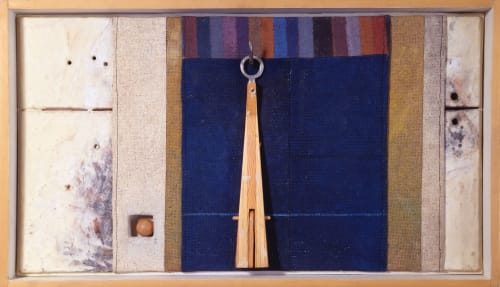Though Marcelo Bonevardi's birthplace was Buenos Aires, the formative years that shaped his artistic sensibilities were spent in Córdoba, Argentina, where his family relocated when he was six years old. The relative isolation of Córdoba from the avant-garde movements flourishing in Buenos Aires during the early twentieth century meant that Bonevardi's earliest artistic influences came from within his own household. His mother, who had studied painting in Perugia, Italy, possessed a collection of Renaissance masterwork reproductions that young Bonevardi frequently duplicated, developing both a mastery of traditional perspective and an enduring fascination with spiritual and mystical themes. Complementing these artistic foundations was the practical education he received accompanying his father, an architect, to various construction sites. This informal apprenticeship proved invaluable; by his mid-teens, Bonevardi had developed remarkable architectural literacy, capable of interpreting blueprints with professional aptitude. These early experiences also nurtured his woodworking skills, which he initially applied to crafting magic trick apparatus.
Following his father's professional path, Bonevardi's formal education led him to Rome at age twenty-one. While the city's rich artistic heritage made a deep impression, it was his discovery of Giorgio de Chirico's work, with its unique fusion of architectural precision
and metaphysical exploration, that would prove most influential to his artistic development. Upon returning to Argentina, Bonevardi balanced an academic position in architecture with an emerging career as a painter, mounting numerous exhibitions
throughout the country. A pivotal moment came in 1958 when, supported by a Guggenheim fellowship, he relocated to New York City to pursue art exclusively.
Bonevardi's arrival in New York coincided with the city's ascendance as the global center of contemporary art. He immersed himself in the vibrant cultural scene, frequenting the legendary Cedar Bar—a crucible of aesthetic discourse among New York School
painters—and exploring the tenth street galleries, which critic Clement Greenberg associated with the distinctive style of Willem de Kooning's followers. While Bonevardi's paintings from this period reflect the influence of his new environment, they maintain a distinctive sense of structure and compositional integrity.
Despite regular exhibition opportunities, Bonevardi found himself spiritually unfulfilled by his current artistic direction. A transformative moment occurred during a visit to a Whitney Annual in the early 1960s, where he encountered Joseph Cornell's shadowboxes. These works would inspire both the "accumulative" quality and mysterious nature of Bonevardi's mature style. Concurrent with this discovery, his
friendships with Gonzalo Fonseca and Julio Alpuy introduced him to Joaquín Torres-García's Constructivist principles. Torres-García was renowned for austere, grid-based paintings that enriched Western abstraction with diverse cultural symbols. Curator Mari Carmen Ramírez notes how Bonevardi transformed Torres-García's visual
vocabulary, replacing traditional symbols with three-dimensional geometric forms and introducing mysterious objects in niched spaces that functioned as talismans.
Guggenheim curator Lawrence Alloway, following a studio visit in March 1964, praised Bonevardi's "logical development of a powerful talent" and his "original and personal style." Alloway had witnessed Bonevardi's innovative "painting-constructions" — wall-mounted assemblages incorporating hand-carved objects within architectural
compositions. These works, which suggested both scientific instruments and ancient artifacts, earned widespread recognition through exhibitions at prestigious venues including the Galería Bonino, the Solomon R. Guggenheim Museum, the Museum of
Modern Art, and the Pennsylvania Academy of Fine Arts. His achievements culminated in winning the International Prize at the 1969 Bienal de São Paulo.
The 1970s marked a darker turn in Bonevardi's work, influenced by Argentina's political upheaval beginning with the "Cordobazo" uprising in his hometown. His drawings from this period explore architectural space with haunting intensity reminiscent of Piranesi's "Imaginary Prisons," while his painting-constructions evolved from celestial navigation tools to more menacing "traps" for cosmic entities. Curator Estrellita Brodsky suggests these works evoke "images of sadistic tools used by interrogators." The escalation of
violence during Argentina's "Dirty War" directly impacted Bonevardi when his work was censored in 1978 for being "medio-Marxist," an experience that left an indelible mark on his artistic expression.
Bonevardi's distinguished career garnered numerous accolades, including his 1969 São Paulo Biennial prize, service on the Guggenheim's Latin American art jury (1979-89), and participation in the 1983 Venice Biennial. Major retrospectives of his work were
mounted at the Musée de Art Contemporain de Montréal (1974), the Center for Inter-American Relations, New York (1980), and the Lowe Art Museum, Miami (2019). His legacy is preserved in the permanent collections of several prestigious institutions, including New York's Solomon R. Guggenheim Museum and Museum of Modern Art.

